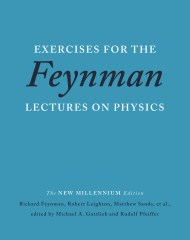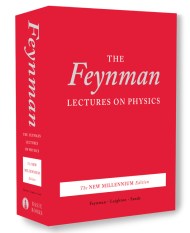Promotion
25% off sitewide. Make sure to order by 11:59am, 12/12 for holiday delivery! Code BEST25 automatically applied at checkout!
By clicking “Accept,” you agree to the use of cookies and similar technologies on your device as set forth in our Cookie Policy and our Privacy Policy. Please note that certain cookies are essential for this website to function properly and do not require user consent to be deployed.
Feynman’s Tips on Physics
Reflections, Advice, Insights, Practice
Contributors
By Michael A Gottlieb
Foreword by Ralph Leighton
Formats and Prices
- On Sale
- Jan 29, 2013
- Page Count
- 176 pages
- Publisher
- Basic Books
- ISBN-13
- 9780465029211
Price
$12.99Price
$16.99 CADFormat
Format:
- ebook (Revised) $12.99 $16.99 CAD
- Trade Paperback (Revised) $18.99 $24.99 CAD
This item is a preorder. Your payment method will be charged immediately, and the product is expected to ship on or around January 29, 2013. This date is subject to change due to shipping delays beyond our control.
Buy from Other Retailers:
With characteristic flair, insight, and humor, Feynman discusses topics physics students often struggle with and offers valuable tips on addressing them. Included here are three lectures on problem-solving and a lecture on inertial guidance omitted from The Feynman Lectures on Physics. An enlightening memoir by Matthew Sands and oral history interviews with Feynman and his Caltech colleagues provide firsthand accounts of the origins of Feynman’s landmark lecture series. Also included are incisive and illuminating exercises originally developed to supplement The Feynman Lectures on Physics, by Robert B. Leighton and Rochus E. Vogt.
Feynman’s Tips on Physics was co-authored by Michael A. Gottlieb and Ralph Leighton to provide students, teachers, and enthusiasts alike an opportunity to learn physics from some of its greatest teachers, the creators of The Feynman Lectures on Physics.
Genre:
-
"Always worthwhile to return to the feet of the master."Bill Gates, Wired
Newsletter Signup
By clicking ‘Sign Up,’ I acknowledge that I have read and agree to Hachette Book Group’s Privacy Policy and Terms of Use












